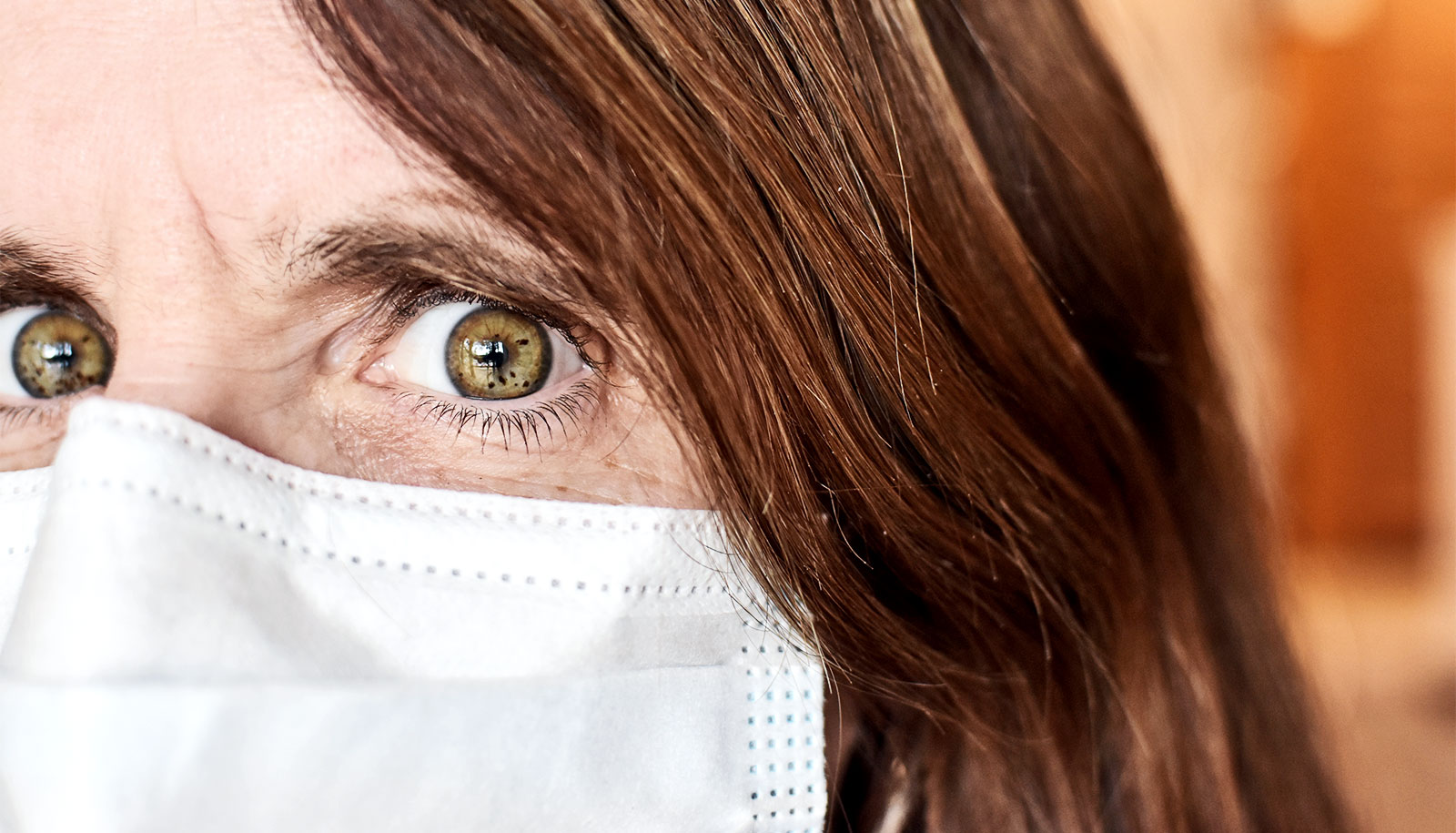A new study uncovers the cellular mechanism and molecular events that explain why some people, including the elderly, have a higher risk of COVID-19 infection as well as of severe side effects and death.
Those at higher risk also include patients with preexisting medical conditions including diabetes, hypertension, obesity, metabolic syndrome, cardiovascular disease, and chronic lung diseases like COPD and asthma.
“This paper details a major discovery in COVID-19,” says immunologist Jack A. Elias, dean of medicine and biological sciences at Brown University and corresponding author of the paper in JCI Insight. “It shows that levels of a protein called chitinase 3-like-1 increase with age as well as co-morbid diseases and infection. What’s more, chitinase 3-like-1 augments SARS CoV-2 infection.”
The findings not only answer important questions about key mechanisms of the complex SARS-CoV-2 virus, Elias says, but also have direct implications for the development of therapeutics to control the viral infection.
Elias is part of a National Institutes of Health-funded laboratory that focuses on the cell and molecular biology of lung injury and repair. Researchers in the lab, including lead study author Suchitra Kamle and coauthor Chun Geun Lee, have recently focused on the biology of enzymes and enzyme-like molecules, called chitinases and chitinase-like proteins, respectively.
Of particular interest is a chitinase-like protein referred to as chitinase 3-like-1, a molecule naturally found in blood.
“We’ve been studying this gene family here at Brown for a while and we know that it has a large number of biologic effects, as well as tremendously important roles in both health and diseases,” says Lee, a research professor of molecular microbiology and immunology.
Chitinase 3-like-1 is the cornerstone of a critical pathway that is activated during injury and inflammation. These researchers and others have shown that circulating levels of chitinase 3-like-1 increase during infection, especially in diseases characterized by inflammation and tissue alterations—like emphysema, asthma, and COPD, some of the same co-morbid diseases that are risk factors for COVID-19.
Interestingly, Lee says, levels of chitinase 3-like-1 have also been shown to increase during normal aging. In fact, they have been reported to be the best predictor of all-cause mortality in people in their 80s.
The researchers thought they might be able to take some of the work they’ve already done with this gene family and apply it to COVID-19, Elias says. They decided to examine the relationship between chitinase 3-like-1 and the receptor ACE2, the spike protein to which the SARS-CoV-2 binds to enter human cells.
In a series of studies, the researchers compared the effects of chitinase 3-like-1 on ACE2 as well as on other protease enzymes that metabolize the spike protein and contribute to infection. They examined these interactions in the lungs of mice that were genetically modified to have exaggerated levels of chitinase 3-like-1 as well as mice deficient in chitinase 3-like-1. In the lab, Kamle led experiments that examined the effects of chitinase 3-like-1 on human lung epithelial cells.
The researchers found that levels of chitinase 3-like-1 increased with age, co-morbid diseases, and infection. In addition, they noted that chitinase 3-like-1 was a potent stimulator of the receptor that SARS-CoV-2 uses to infect cells.
Spurred by this discovery, the researchers developed a humanized monoclonal antibody called FRG that attacks a particular region of chitinase 3-like-1—a step that turned out to be critical. They found that this “therapeutic” antibody, as well as another small molecule, powerfully blocked the induction of the ACE2 receptor.
“So in that way, the virus cannot enter into the host system,” says Kamle, an investigator in molecular microbiology and immunology as well as antibody engineering. “This means there will be less infection in the presence of this therapeutic FRG antibody.”
These findings could pave the way for the development of therapeutics to protect people from infection, Elias says.
“You can imagine a scenario in which someone who has been exposed to a person who has the virus is given the antibody, which then acts like a prophylactic to prevent infection or make the symptoms that the infection induces milder,” he says.
Elias described another potential scenario in which the person who has the virus is given the antibody or the small molecule, which halts the infection and effectively “cures” the illness.
“We show in this paper that if we make antibodies or other small molecules that can inhibit chitinase 3-like-1, they can be therapeutics to control viral infection,” Elias says.
The team is currently looking at how these antibodies and small molecules react with different variants of the SARS CoV-2 virus, including the infectious Delta variant that has recently changed the course of the pandemic.
The National Institute of Health, the US Department of Defense, and a COVID-19 Research Seed Grant from Brown University funded the work.
Source: Brown University



